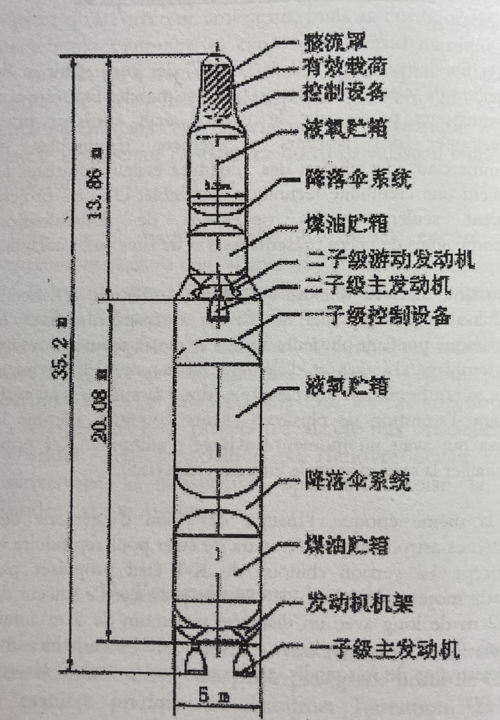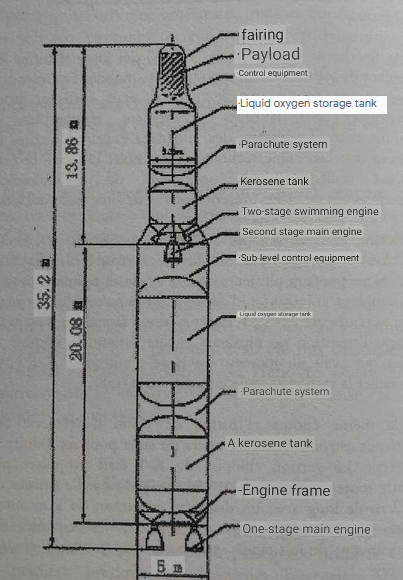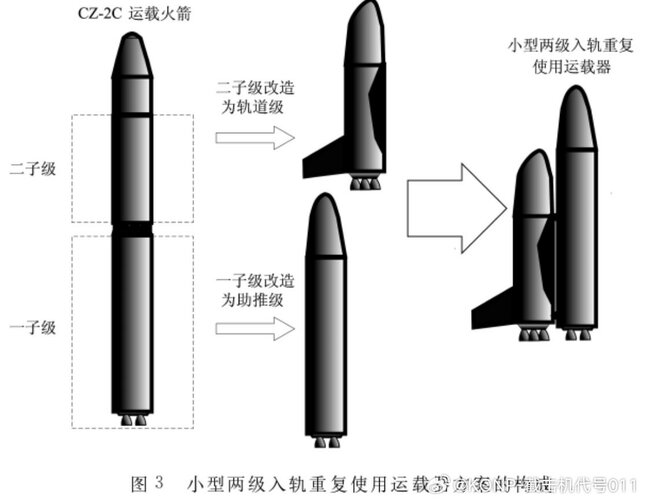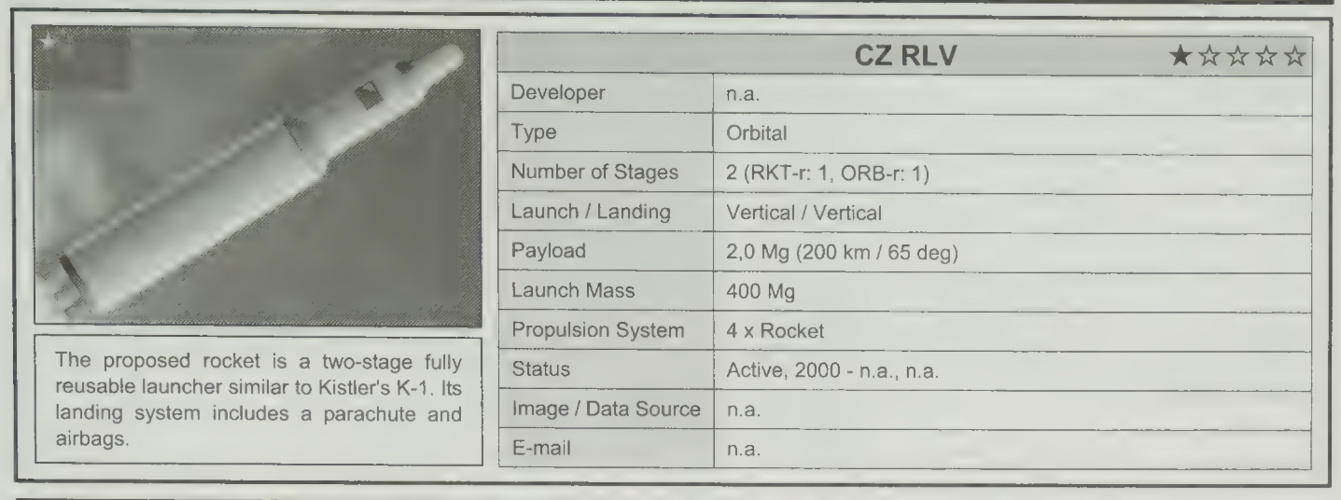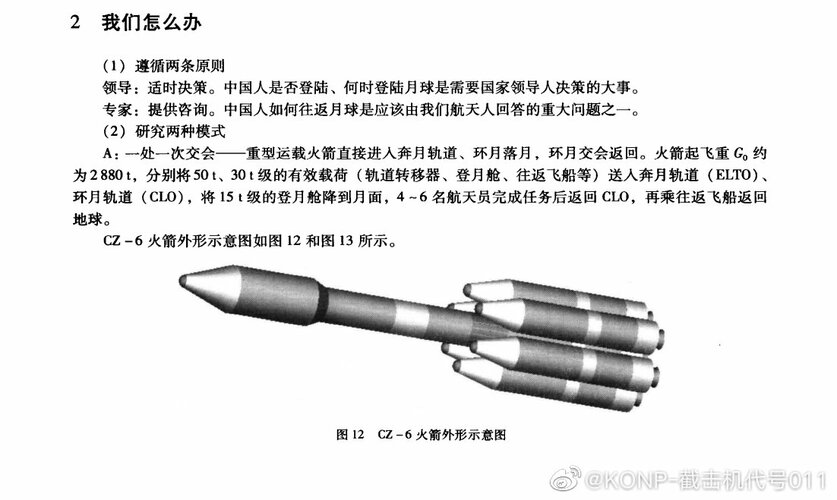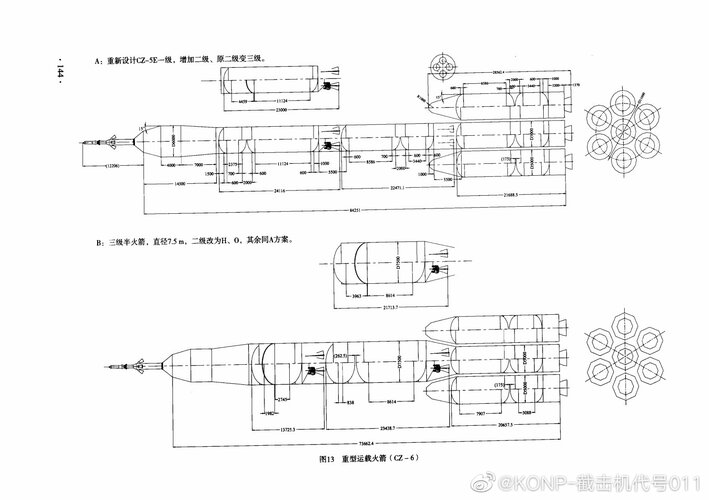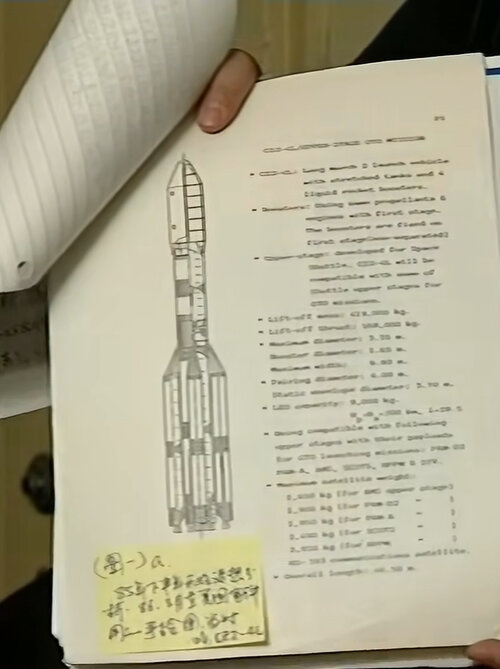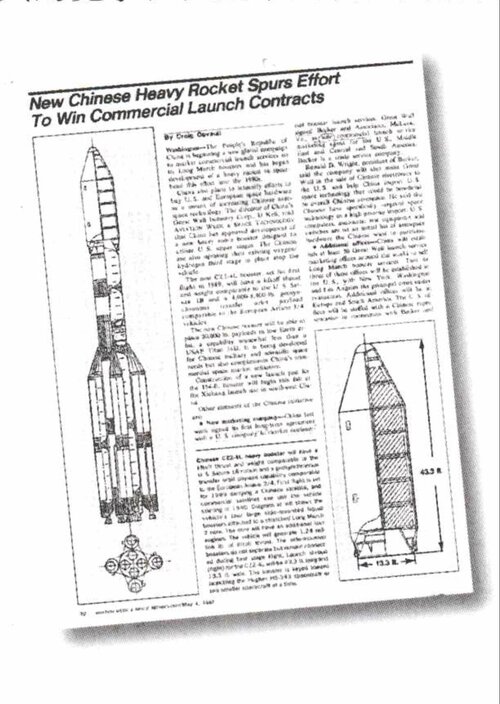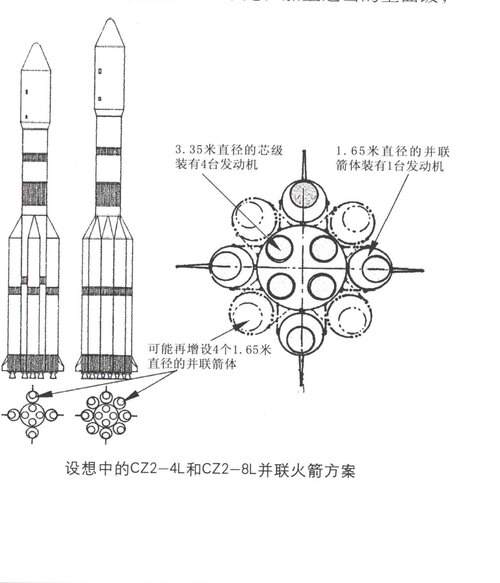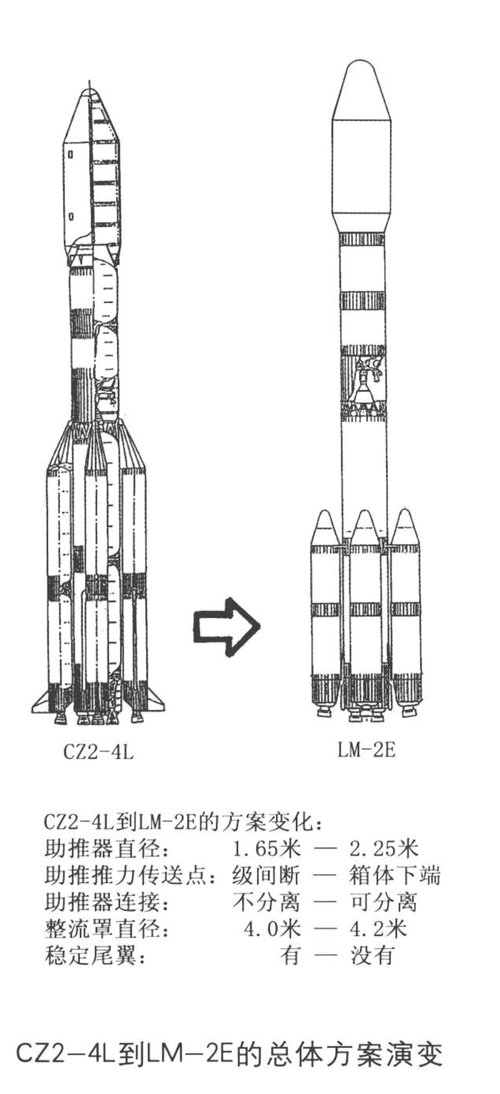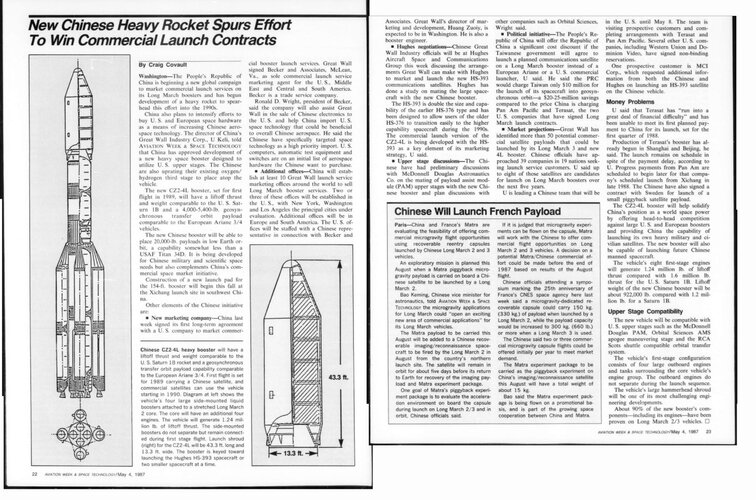TheKutKu
ACCESS: Secret
- Joined
- 13 February 2023
- Messages
- 461
- Reaction score
- 1,374
I noticed there wasn't a general thread for this, so I created this since there are a lot of unrealised chinese launcher projects.
Starting with one that's already described on astronautix, but I'm posting a source, taken from Xiandong Bao "A Modular Space Transportation System" (IAF-92-0857) and also described in P.S. Clark (1999) JBIS, 52; Xiandong Bao was an engineer at what is now known as SAST, one of the main subsidiary of the Chinese astronautics giant CASC. This is one of the earlier proposals for a hydrocarbon-fuelled chinese launcher (although slightly earlier one were proposed during initial trade studies for the Shenzhou program)
Launch mass 377 tons
Payload capability 11 tons
Length 55 m
Diameter 4.5 m
Launch thrust 4.8 MN (490 tons-force)



The paper then speculates:
Starting with one that's already described on astronautix, but I'm posting a source, taken from Xiandong Bao "A Modular Space Transportation System" (IAF-92-0857) and also described in P.S. Clark (1999) JBIS, 52; Xiandong Bao was an engineer at what is now known as SAST, one of the main subsidiary of the Chinese astronautics giant CASC. This is one of the earlier proposals for a hydrocarbon-fuelled chinese launcher (although slightly earlier one were proposed during initial trade studies for the Shenzhou program)
Data for the overall launch vehicle are:The idea behind the paper is the development of a baseline two-stage launch vehicle. The Chinese paper notes that the first stage fuel would be a "hydrocarbon (CH)" and this is taken to refer to kerosene especially since the Chinese would later express an interest in purchasing Russian liquid oxygen/kero- sene engines (discussed later in this section).
The use of liquid oxygen and kerosene on the first stage of this vehicle would mark a departure for the Chinese, since they have previously used storable UDMH and a nitrogen-derived oxidizer (usually nitrogen tetroxide)
Launch mass 377 tons
Payload capability 11 tons
Length 55 m
Diameter 4.5 m
Launch thrust 4.8 MN (490 tons-force)
On top of the second stage an instrument unit 1.6 metres high would be carried, acting as a data-collection and process- ing centre for the vehicle
The first stage would carry four engines which can gimble for control. The second stage a single main engine and a set of four verniers.
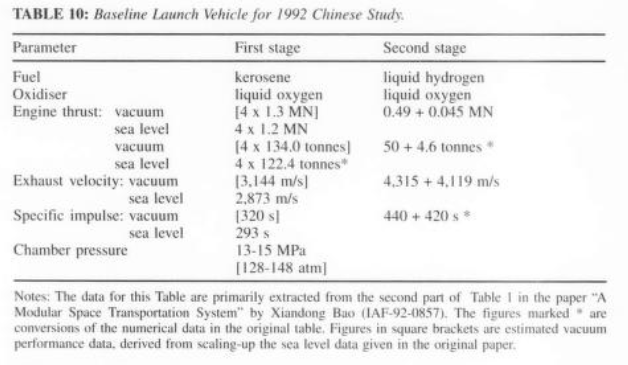
Taking this base design, it is proposed that a three-stage launch vehicle could be developed which could place 6 tonnes into geosynchronous transfer orbit: although not stated, one assumes that the third stage would use liquid oxygen and liquid hydrogen.
A series of different launch vehicles derived from the baseline launch vehicle's stages and the not-described third stage is proposed, leading to a maximum payload capability of 70 tonnes to the standard 60", 300-500 km reference orbit. For the larger payloads a fairing with a diameter of 5.4 metres and a length of 18 metres would be used.
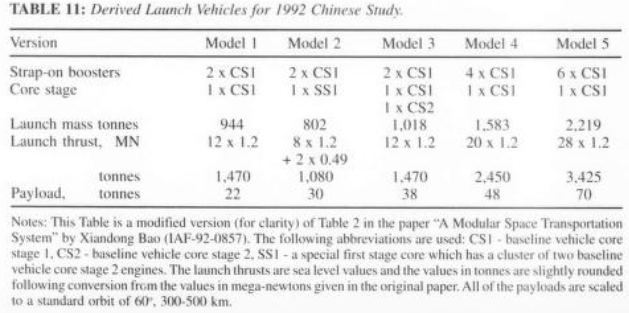
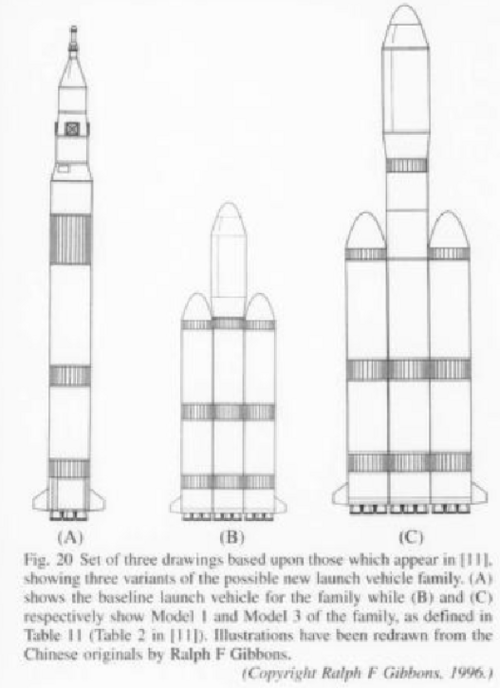
The paper then speculates:
Which of course turned out to be true. the YF-100 engine series was developped partially thanks to what was learned from studying a purchased ukrainian RD-120 (KRD-120 to be more accurate), more can be read hereOn the other hand, the Chinese have purchased an RD-120 engine. While the RD-120 itself has been used as the main engine on the second stage of the Zenit launch vehicle, the Russians are planning to introduce a modification designated RD-120K as the first stage of their new Rus/Soyuz-2 family of launch vehicles. It is not known whether the Chinese purchased the RD-120 itself or the more recent RD-120K modification.
One might speculate that if the launch vehicle family proposed in the 1992 IAF paper is being funded, then Chinese engines based upon what they have learned from studying the RD-120 technology could see an application of the first stage of the baseline launch vehicle. However, this is currently pure speculation.

